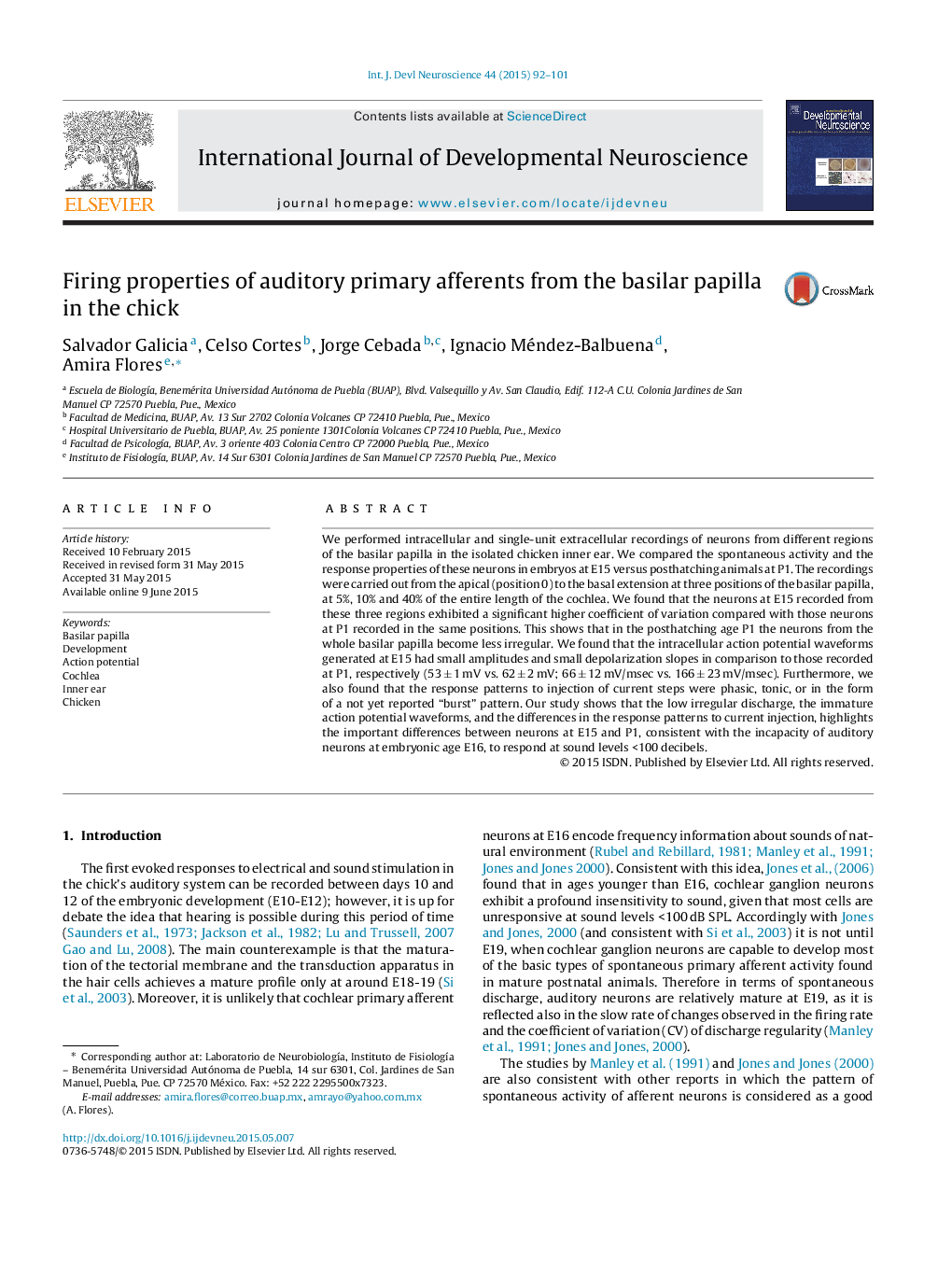| Article ID | Journal | Published Year | Pages | File Type |
|---|---|---|---|---|
| 2785851 | International Journal of Developmental Neuroscience | 2015 | 10 Pages |
•Extra and intra-cellular recordings of auditory neurons at E15 and P1 were obtained.•Auditory afferent neurons exhibit higher spontaneous firing frequency at P1 than at E15.•Firing frequency and CV of these neurons are not related to their location in cochlea.•Intrinsic membrane parameters of afferent neurons at E15 versus P1 are different.•Afferent neurons at E15 and P1 exhibit phasic responses to current injection.•Afferent neurons at P1 exhibit tonic and bursting responses to current injection.
We performed intracellular and single-unit extracellular recordings of neurons from different regions of the basilar papilla in the isolated chicken inner ear. We compared the spontaneous activity and the response properties of these neurons in embryos at E15 versus posthatching animals at P1. The recordings were carried out from the apical (position 0) to the basal extension at three positions of the basilar papilla, at 5%, 10% and 40% of the entire length of the cochlea. We found that the neurons at E15 recorded from these three regions exhibited a significant higher coefficient of variation compared with those neurons at P1 recorded in the same positions. This shows that in the posthatching age P1 the neurons from the whole basilar papilla become less irregular. We found that the intracellular action potential waveforms generated at E15 had small amplitudes and small depolarization slopes in comparison to those recorded at P1, respectively (53 ± 1 mV vs. 62 ± 2 mV; 66 ± 12 mV/msec vs. 166 ± 23 mV/msec). Furthermore, we also found that the response patterns to injection of current steps were phasic, tonic, or in the form of a not yet reported “burst” pattern. Our study shows that the low irregular discharge, the immature action potential waveforms, and the differences in the response patterns to current injection, highlights the important differences between neurons at E15 and P1, consistent with the incapacity of auditory neurons at embryonic age E16, to respond at sound levels <100 decibels.
